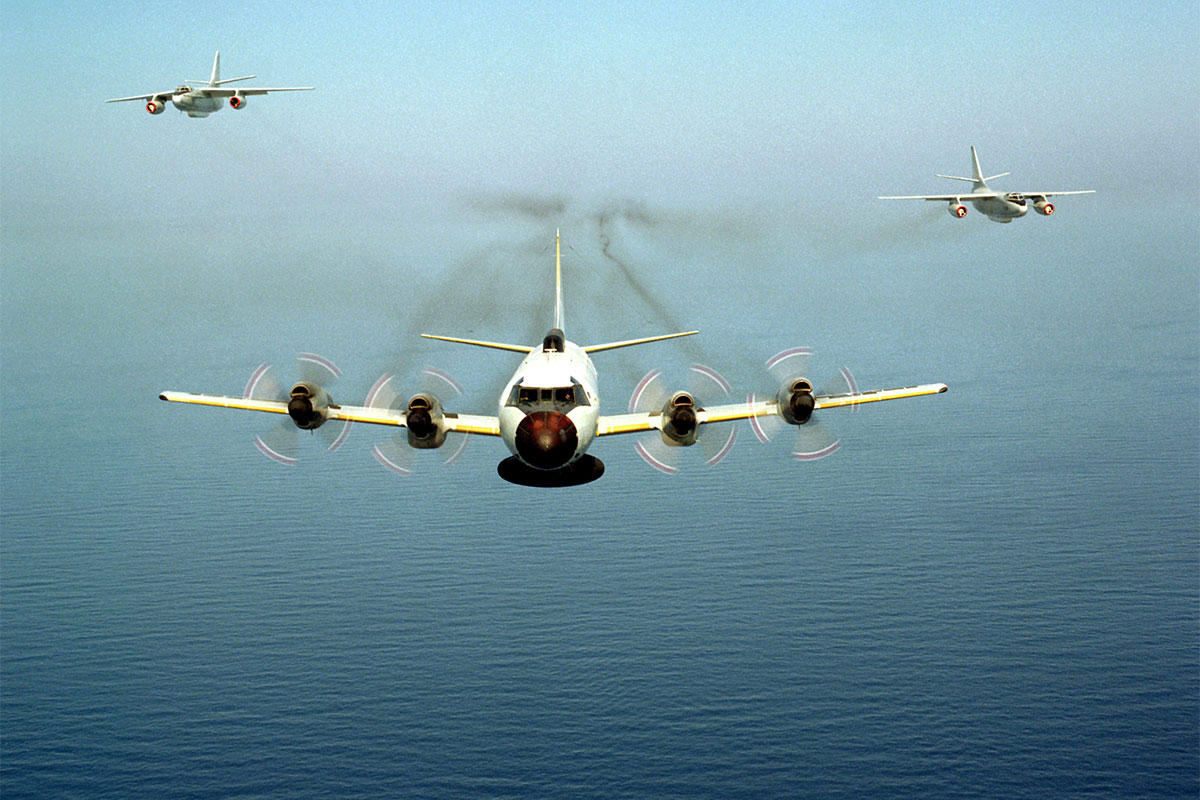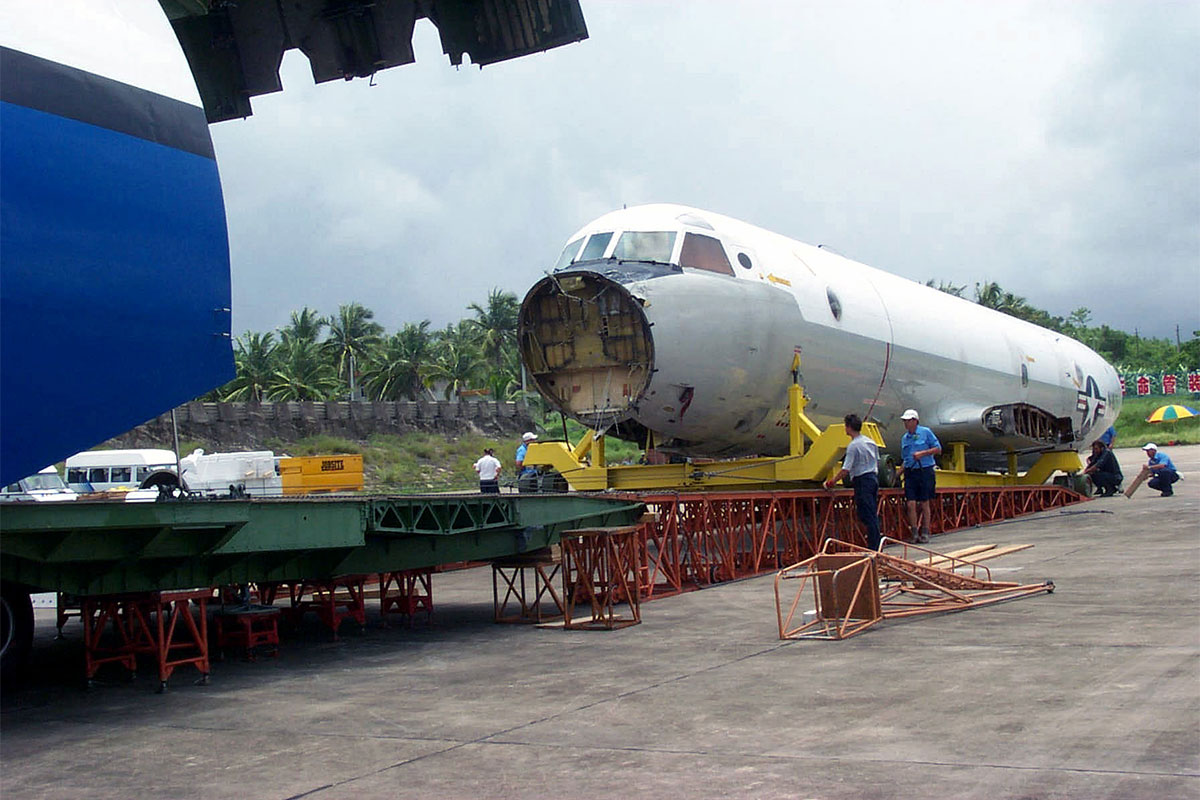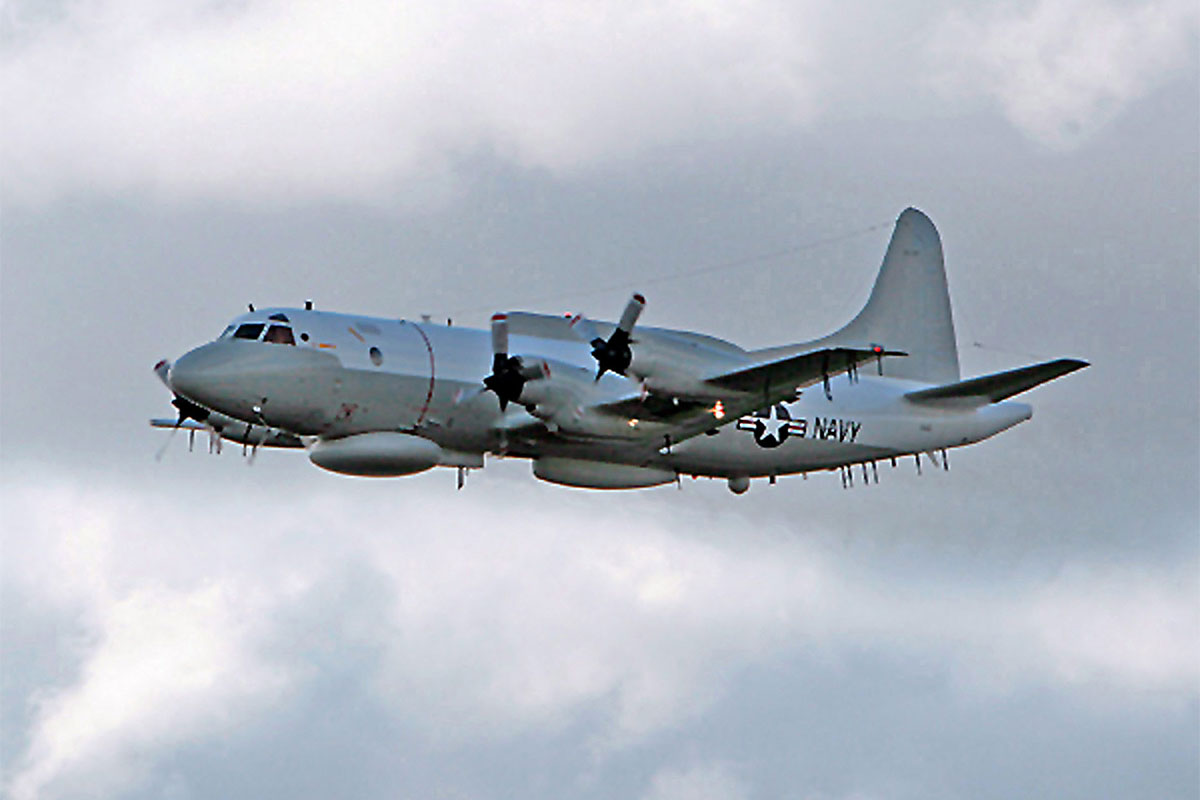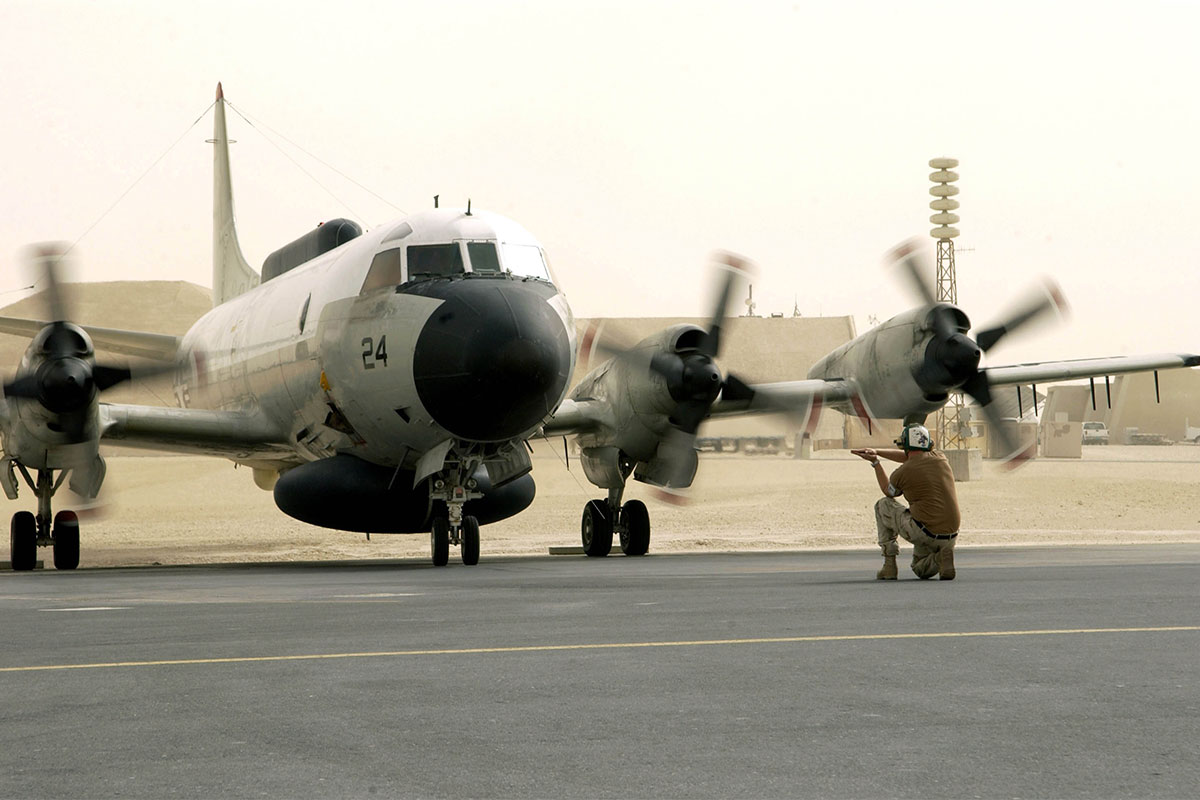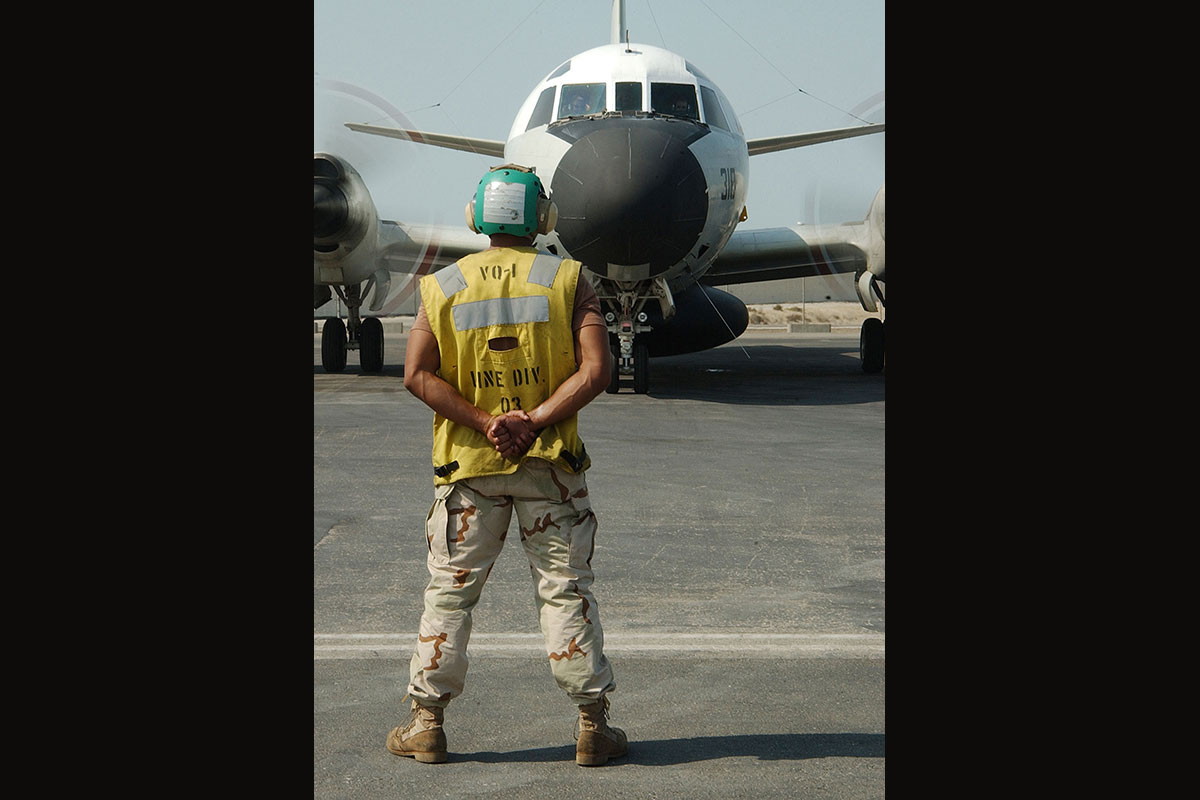Primary Function: Signals Intelligence (SIGINT) reconnaissance aircraft.
Contractor: Lockheed Martin Aeronautical Systems Company.
Unit Cost: $36 million.
Propulsion: Four Allison T-56-A-14 turboprop engines (4,900 shaft horsepower each).
Length: 116 feet 7 inches (35.57 meters).
Height: 33 feet 7 inches (10.27 meters).
Wingspan: 99 feet 6 inches (30.36 meters).
Weight: Max gross take-off: 139,760 pounds (63,394.1 kg).
Airspeed: 411 knots (466 mph, 745 kph); cruise - 328 knots (403 mph, 644 kph).
Ceiling: 28,300 feet (8,625.84 meters).
Range: Maximum mission range - 2,380 nautical miles (2,738.9 miles); for three hours on station @1,500 feet - 1,346 nautical miles (1,548.97 miles).
Crew: 22+
Based on the 1950s-era L-188 Electra, the EP-3E ARIES II (Airborne Reconnaissance Integrated Electronic System II) is the Navy's only land-based signals intelligence reconnaissance aircraft.
The 11 aircraft in the Navy's inventory are based on the Orion P-3 airframe and provide fleet and theater commanders worldwide with near real-time tactical SIGINT. With sensitive receivers and high-gain dish antennas, the EP-3E exploits a wide range of electronic emissions from deep within targeted territory.
During the 1990s twelve P-3Cs were converted to EP3-E ARIES II to replace older versions of the aircraft. The original ARIES I aircraft were converted in the late 1960s and early 1970s. The last EP-3E ARIES II aircraft was delivered in 1997. EP-3Es have been heavily engaged in reconnaissance in support of NATO forces in Bosnia, joint forces in Korea and in Operation Southern Watch, Northern Watch, and Allied Force.
Much of the EP-3's mission is secret and is conducted in high threat areas where long range standoff is required. Most recently, a Navy EP-3 crashed into a Chinese navy J-8 fighter and was forced down into Chinese territory. The crew was eventually released but the plane and its sensitive electronic surveillance systems were picked apart by the Chinese government before the plane was returned in pieces.

